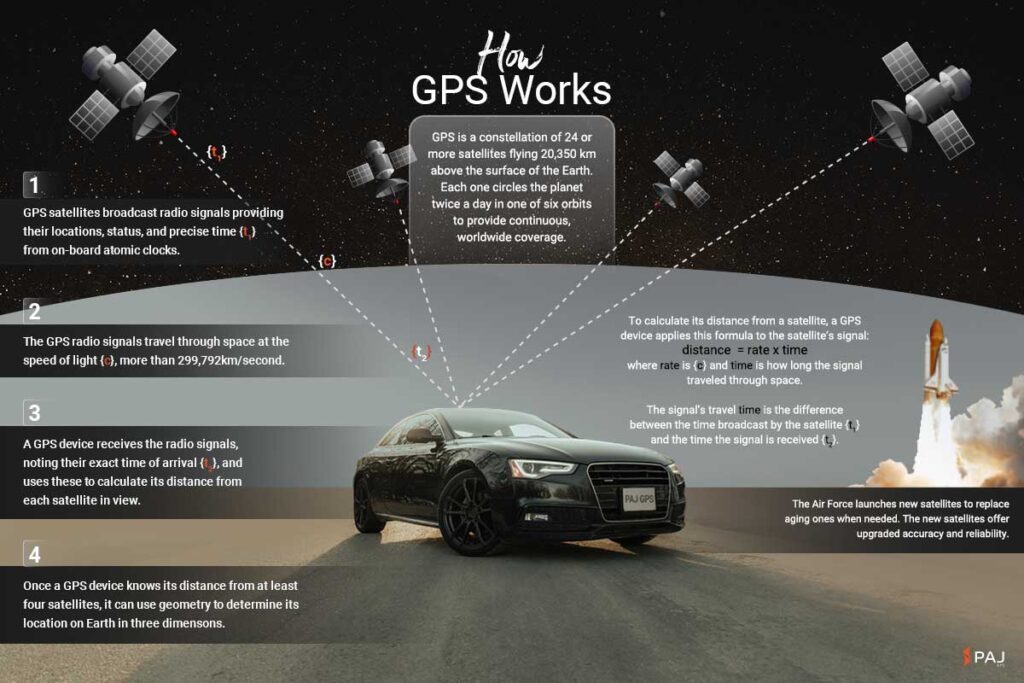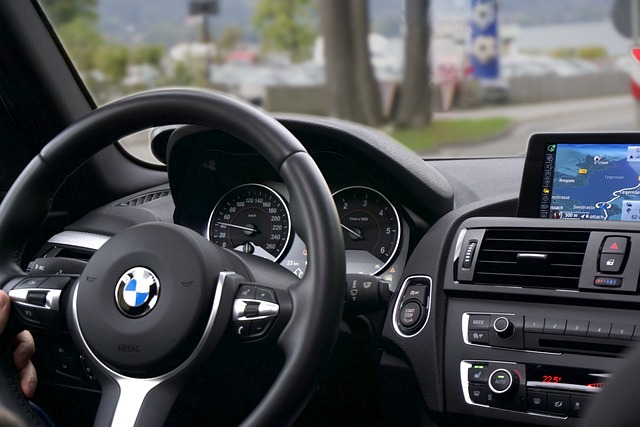Why do GPS Tracker need subscription?
Have you ever wondered why GPS trackers need a subscription? Whether you’re keeping tabs on your favourite vehicle or anything else, GPS trackers are gaining popularity for their cool features. We all know what GPS is; it’s a part of our daily lives. But, you know, there’s this growing confusion among GPS tracker users about subscriptions.
So, let’s break it down!
What is GPS?
GPS stands for Global Positioning System which consist of satellites and base stations. It is a free of cost service provided by the U.S governments. The GPS system helps to pinpoint any location on earth. The U.S Department of Defence made the GPS system available for public in the year 1980.
There are at least 24 GPS satellites that revolves around earth. These satellites frequently transmit the orbital parameters to the earth along with signals that uniquely identify each satellite. To identify any location on earth, there should be a GPS receiver that can decode these signals.
A GPS system consist of 3 parts. A satellite constellation, A base station and GPS receiver
A base station is responsible for managing and maintaining the satellites. It is located on earth.
A GPS receiver is an equipment that reads the GPS signal and decode the coordinates and satellite identifiers.
How GPS works?
Let’s understand how GPS works using a sample scenario.
A person on earth wants to know his geo location. He has the GPS receiver with him.
To understand the location coordinates the GPS receiver would want to calculate the distance from at least 3 GPS satellites. To calculate the distance GPS receiver uses the signals from satellites. Then by mathematical calculation it can find the coordinates of its location by identifying the intercepting points from these satellites. Here is a simple mathematical formula to find the distance if we know the frequency and wavelength of a signal.
Distance = Speed x Time
Speed = Frequency x Wavelength
The GPS receiver calculates the current location using a process called trilateration, which involves determining the distances from the GPS receiver to a set of satellites in space. Here’s a step-by-step explanation of how it works:
- Satellite Signals:At any given time, there are at least 24 GPS satellites orbiting the Earth. Each satellite continuously broadcasts signals that include:
- The satellite’s position (ephemeris data).
- The precise time the signal was transmitted.
- GPS Receiver Signal Reception: The GPS receiver on the ground picks up signals from multiple satellites. To calculate a position fix, the receiver needs signals from at least three satellites (preferably four for better accuracy).
- Distance Calculation (Pseudorange): The GPS receiver calculates the distance to each satellite by measuring the time it took for the signals to travel from the satellites to the receiver. This is done by comparing the time the signal was transmitted by the satellite with the time it was received by the GPS receiver.
- Trilateration: Once the distances to three or more satellites are known, the GPS receiver uses a mathematical technique called trilateration to determine its precise location. Trilateration involves intersecting spheres or circles to find the common point where they meet.
- Calculating Coordinates: The GPS receiver’s internal computer processes the distance measurements and the known positions of the satellites to calculate latitude, longitude, and sometimes altitude (if signals from four satellites are used).
- Additional Factors: To improve accuracy, the GPS receiver compensates for factors like ionospheric and tropospheric delays that can affect the speed of satellite signals as they travel through the Earth’s atmosphere.
- Geometric Dilution of Precision (GDOP): The GPS receiver considers the geometric arrangement of the satellites in the sky and calculates the Dilution of Precision (DOP), which helps assess the accuracy of the position fix. Lower DOP values generally indicate better accuracy.
- Position Update: As the GPS receiver continues to receive signals from satellites, it continually updates its position fix to provide real-time location information.

Difference between GPS navigation and GPS Tracking
As we have already discussed earlier, GPS have so many applications on our daily life. GPS Navigation and GPS tracking are two such area where there are a lot of development undergoing. The two applications use GPS but the position of end user in comparison to the GPS receiver is different in each application.
Here the end user could be a human being or a software programme.
In GPS Navigation the end user and GPS receiver are located at the same point. For example, a driver using the car navigation to cruise around the city. Here the end user is driver and GPS receiver is residing inside car navigation system. Since the GPS is completely free to use, the driver doesn’t have to pay anything additional to use this service.

GPS tracking on other hand, the end user and GPS receiver is far away from each other. The ideal application is monitoring a fleet movement from company headquarters. In this the company car is equipped with a GPS tracking device and a manager (End User) is monitoring the location live from their computer. The GPS tracking device consists of GPS receiver.
GPS navigation is purely for navigation purposes on the other hand GPS tracker can provide so many more data such as speed, distance travelled and current location. Apart from that a tracking system can be used as a security element for cars. It can send alerts if the host vehicle is out of a geographical location, or it is speeding beyond the limit. Common alert features include ignition alert, geo fence alert, speeding alert and vibrational alert.
In summary, GPS technology plays a crucial role in various aspects of our daily life.
While GPS navigation involves the end user and GPS receiver being at the same location, as seen in car navigation systems, GPS tracking scenarios often feature a considerable distance between the end user, typically a manager monitoring fleet movement, and the GPS receiver equipped in the company’s vehicles.
GPS tracking offers comprehensive data, including speed, distance, and real-time location, making it not only a navigation tool but also an asset for security and monitoring purposes. Alert features further enhance its functionality, providing notifications for events like ignition, geo-fencing, speeding, and vibrations. Regular updates and robust security protocols make PAJ GPS devices a reliable choice for safeguarding your information.
Hope you are already in an awe to know the fact that a simple change in position of a device is resulting in a lot of change in its performance and application.
Why GPS Tracker needs subscription?
GPS Tracker as explained earlier have the GPS receiver and end user are located far away from each other. Even though to find the location of the host vehicle is cost free, sending the location to the end-user require some form of communication.
Internet is the fastest way to communicate as of today.
So, GPS tracker device has incorporated an M2M Sim card which help them to send the location data to the end user. It is also worth noting that, these coordinates from the GPS Tracker are first send to a server using the network provided by the M2M sim cards. Then complex calculation is performed at the server and server sends the data to the end user. Typically, GPS Tracking system come with a tracking app. This dedicated app display live location of the tracker device by receiving the data from the server.
Coming into the communication part, it is evident that GPS tracker require internet connectivity to perform its duty. The subscription amount is for the service provided by the M2M sim card inside the GPS tracker. These sim cards can switch between the best performing network in any location to ensure connectivity in every part of the world.
Is there a GPS tracker with no subscription fee?
Unlike GPS, no company or Government has ever provided internet for free. Because it requires costly maintenance and manpower to run the internet through the world. Internet is the fastest way to communicate and there is no substitute has ever found for long distance communication. Trackers that work on Bluetooth and local Wi-Fi network can claim no monthly fee. But the drawback is it does not capable for long distance tracking. Hence there is no GPS tracker that provide tracking without the help of internet.
You may see brands claiming to be providing GPS Tracer without monthly fee, but it is just another business model that indirectly deduct the internet subscription fee in one way or another. it’s essential for consumers to carefully examine the features and understand the underlying business models. In some cases, what seems like a no-cost solution may involve indirect deductions or alternative billing structures. It’s recommended to scrutinize the fine print and inquire about any additional charges that may be associated with seemingly ‘free’ GPS tracker services. As a responsible consumer, staying informed about the true cost structure can help you make well-informed decisions when choosing a GPS tracking solution.
See you








